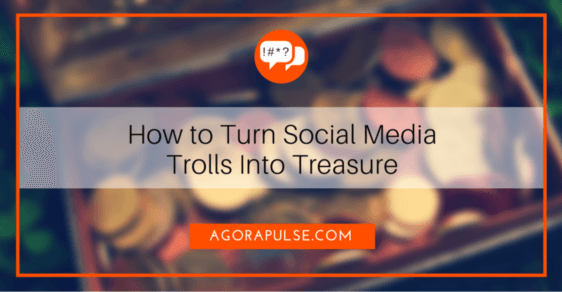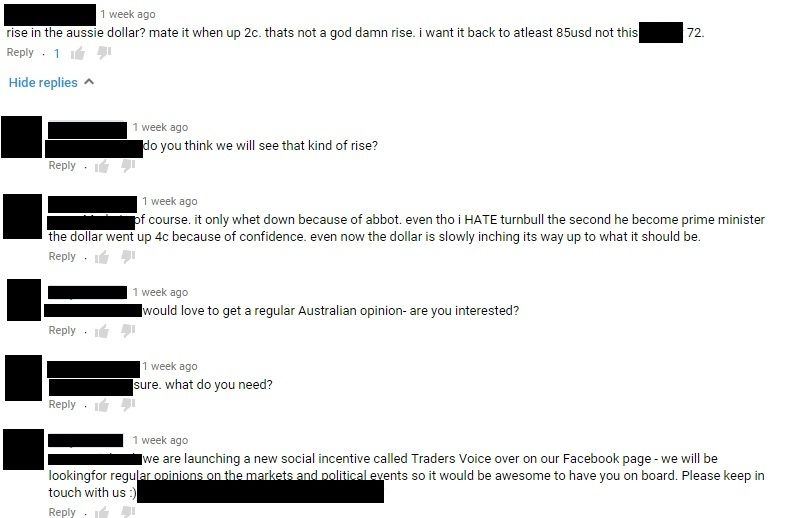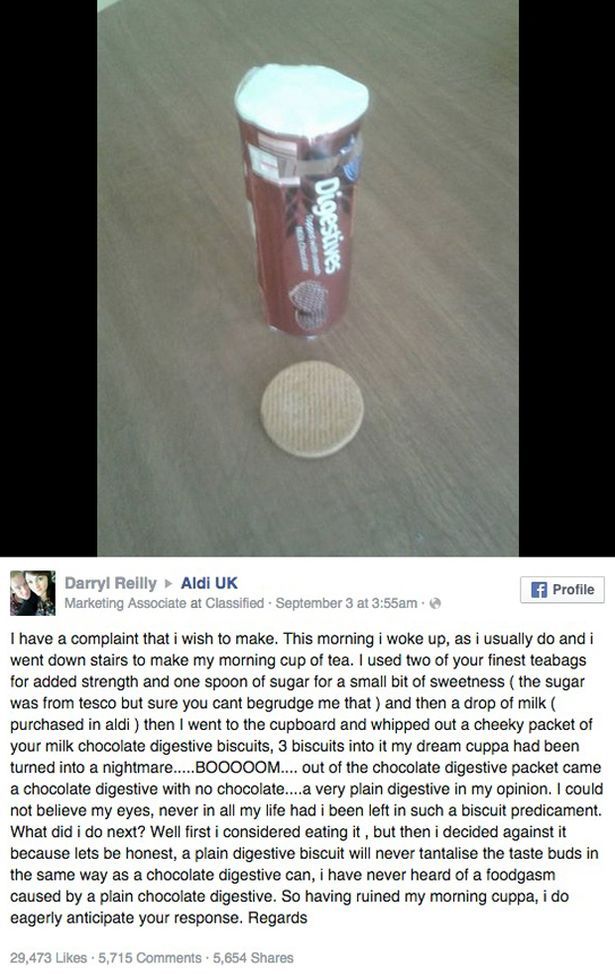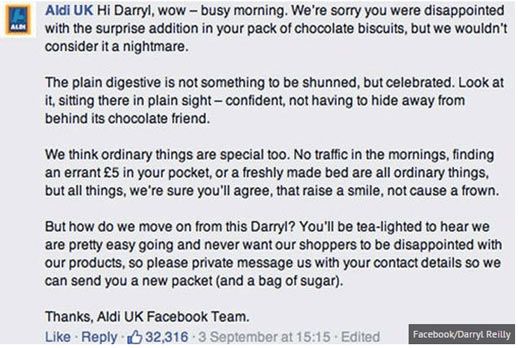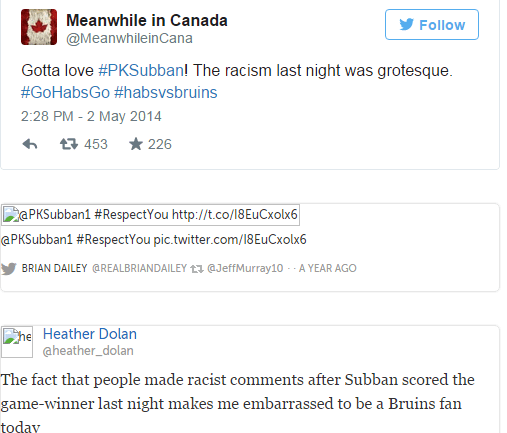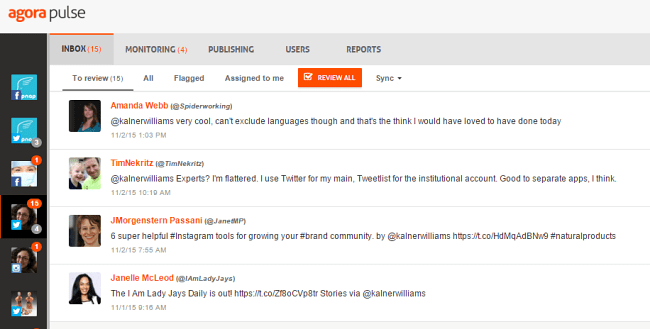Ah, trolls. Those who spend an inordinate amount of time leaving less-than-supportive replies and comments on your social media accounts.
Many social media managers have a knee jerk reaction to social media trolls and will immediately delete their comment and block them from the fan page. But there is value to be gained by allowing a troll to remain. Let’s learn how you can turn “trolls into treasure” by taking a targeted approach.
Consider the following three troll scenarios and the best ways to turn around the respective situations.
#1 Disagreement
A troll is not necessarily someone who disagrees with you. This is important to remember.
Yes it can be frustrating to have someone disagreeing with you when you are promoting your brand but guess what… that’s social media interaction! If you are managing a social media page or forum then you have to be prepared for disagreement.
Example: I manage the social media pages for a huge finance brand. As such we frequently publish videos on our YouTube channel which discuss the financial markets, trading techniques and currency movements. I recently posted a video which met with disagreement from a YouTube user. As you can see from the screenshot below, by listening to the feedback and engaging the fan I actually ended up having a brand advocate.
Turn That Troll Into Treasure: Disagreement can be a really great thing to raise the interaction on your page and draw other users into the interaction. If the language is fairly clean and the tone is not abusive then you should engage in discussion. You may even find that you build a great relationship with your dissenters and they become regular contributors to your fan pages!
#2 Complaints
Someone who complains is not necessarily a troll so it is important to judge each case individually. Today you will find that many customers visit a brand’s social media pages if they are dissatisfied before they will contact the company directly to complain.
Still 70% of brands ignore customer complaints on Twitter which can’t be good. In many cases as a social media manager, you are an extension of your brand’s customer support team as this example from Aldi’s social media pages shows:
Example: This customer posted a complaint about a packet of biscuits to Aldi’s social media page. The company responded with the three A’s… APOLOGY, ACKNOWLEDGMENT, ACTION. Of course, this complaint was not a serious one but the format of your response should remain the same wherever possible. If you cannot apologize for the product then at least apologize that your customer is unhappy, acknowledge the complaint and state your course of action.
Turn That Troll Into Treasure: If you respond correctly, then you will be showing other fans on your page that you do not shy away from complaints. This in itself will produce future customers for your brand.
Wherever possible, direct the complainant to a private message where you can go into further details about the complaint and arrange to resolve it for them. If they do not want to leave the public thread, explain that communicating via private or direct messaging is often to ensure confidentiality when handling details such as their telephone number, customer number or address.
#3 Haters
As Taylor Swift says “the haters gonna hate” and never has that been more true than on social media! Every brand has its haters and in many cases there is nothing you can do about it other than to manage your responses. There are many reasons why someone might hate your brand. Perhaps they disagree with your ethics, had a bad experience, work for your competitors, or perhaps they are just unbalanced as the next example shows.
Example: So can you turn a true hater into someone who loves your brand? Probably not but there are still ways to turn trolls into treasure as this example from P.K Subban shows. P.K Subban is a Canadian ice hockey player who received a series of racist tweets following a match in 2014. By simply staying classy and staying quiet, Subban’s loyal fans took to Twitter to rebuke the haters and show their support for this sportsman:
Turn That Troll Into Treasure: Often the social media community will regulate itself and there is no need for you to put your nanny hat on at all! If a hater is way out of line then you will often find your loyal fans jumping in to defend your brand which in many cases will shame the hater.
Thank your loyal fans for their positive comments but never stoop down to a hater’s level. Always remember your brand voice and refrain from becoming hateful or argumentative.
When to Delete & Block
Of course there are times when you will need to delete comments and block users. Here are my criteria for doing so although every brand is different:
- When a competitor spams your page with links or promotions
- When a user aims bad language, racism, sexism or homophobia towards another fan
- When a user is trying to convert fans to another brand
- Following threats or abuse (consider police involvement in some cases)
How to Monitor Troll Activity
Agorapulse offers a unified inbox for each of your Facebook, Twitter, and Instagram accounts. These inboxes collect all your brand mentions, replies, and messages for that account in one location. That makes monitoring your conversations — whether they be happy or unpleasant ones — a much easier process.
(Want to try Agorapulse? Sign up for a free trial!)
Regardless of how you approach your Twitter customer service strategy, as long as you acknowledge your fans’ sentiments, create unique experiences, and stay human, you’re likely to keep your customers happy and loyal.
In conclusion, not all trolls are bad and worthy of being blocked. Try to adopt an individual approach to each comment and avoid hitting the “block user” button at the first sign of trouble.
How have you turned trolls into treasure? Let us know in the comments below!
